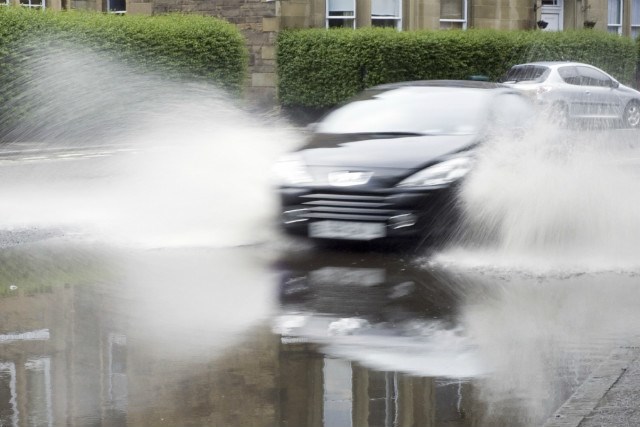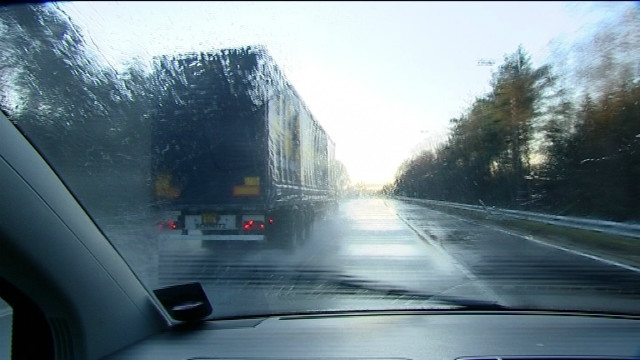When driving in heavy rain, one of the potential dangers motorists could encounter on the road is aquaplaning.
In this guide, we explain what exactly aquaplaning is and offer tips on how to safely deal with it and avoid it all together.
We’ve touched upon the subject of aquaplaning before in our tips for safe wet weather driving guide and our guide on things to avoid when driving in the rain. But here we’re going more in depth about this potential hazard.
What does aquaplaning mean?
Aquaplaning, also known as hydroplaning, is what happens when there is enough water between the road surface and the tyres of a vehicle to prevent contact between the two.
Since the tyres are not applying pressure to the road surface, they are incapable of providing any grip to the car. Therefore, the flow of water dictates what direction the car will ultimately skid towards while its aquaplaning. That’s clearly a huge problem since the car could wind up skidding towards an object such as another vehicle, creating a collision.
How does aquaplaning happen?
The two main factors which decide whether aquaplaning occurs is how much standing water there is in a particular patch of road and how fast a car is travelling. The quicker a car is moving, the more likely it is to aquaplane, but if there is a lack of water on the road then aquaplaning is not possible anyway.
Modern roads tend to have cambers and drainage systems designed to clear water while it’s raining, meaning water will not linger and build up and create the risk of aquaplaning.

However, if a road is old, heavily used or damaged, the cambers may not work so effectively in parts and standing water or puddles can build up in these areas during showers. As a result, a car that hits these parts with puddles or standing water at speed during or just after a heavy rain spell could end up aquaplaning.
How can you tell if your vehicle is aquaplaning?
While driving over a patch of road with standing water a few noticeable changes in your car’s behaviour could be signs that it is aquaplaning. One of the most alarming is the feeling that the steering has become light – a sign that the tyres are making little to no contact with the road surface.
Other signs to look out for include hearing the engine suddenly become louder or the feeling like you’ve dropped the clutch down some gears while moving at speed, causing the revs to increase. You may also feel the rear end of the car slide from side to side, something which is known as ‘fishtailing’.
How to regain control of a vehicle in a skid
If you feel your car has started aquaplaning, then you shouldn’t panic as there are things you can do to minimise the effects and help regain control.
When it happens, you should gently ease off the accelerator and keep the steering wheel straight. Switch off cruise control if it’s currently on and only use the brakes lightly if you feel the need to use them at all to slow down.

Maintain this approach and you should feel the wheels regain traction at some point which will let you get back full control of the car. Use this opportunity to slow the car down further until you’re through the patch of the road which contains standing water.
Remember that vehicle skids are most likely to be caused by sharp braking or sudden turning of the wheel while aquaplaning could easily cause the car to skid or slide out of control.
How to avoid aquaplaning
The main thing to consider when driving on a road where standing water could be encountered (due to a current or recent rain shower) is that you should drive slower and more cautiously compared to if the road was dry.
Give yourself more distance to any cars in front and brake at corners and junctions earlier than you would while the road was dry. A non-aggressive driving style with no sudden actions (like sharp turning) is the way to go to minimise the risk of aquaplaning.
Driving in a slower, more cautious manner will also give you more time to observe the road ahead and identify if there are any patches of standing water on a corner or straight that require appropriate action.
If you know you’ll be driving on a very wet road, it’s worth checking the conditioning of your tyres in advance since they will also determine the chances of you aquaplaning. The better state your tyres are in, the better they will be at clearing water effectively while tackling wet roads. Even if you drive cautiously, you could end up aquaplaning regardless if the tyres are in poor condition.




